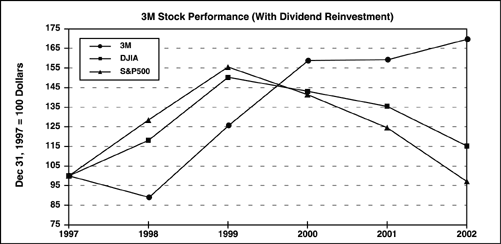|
household, please contact our
transfer agent, Wells Fargo Shareowner Services at 1-800-401-1952 (U.S.), 651-450-4064
(outside the U.S.), www.wellsfargo.com/shareownerservices, or in writing to 161 North
Concord Exchange, South St. Paul, MN 55075.
We
have adopted a procedure approved by the Securities and Exchange Commission (SEC) called “householding.” Under this
procedure, stockholders of record who have the same address and last name and do not
participate in electronic delivery of proxy materials will receive only one copy of our
Annual Report and proxy statement unless one or more of these stockholders notifies us
that they wish to continue receiving individual copies. This procedure will reduce our
printing costs and postage fees.
Stockholders
who participate in householding will continue to receive separate proxy cards.
Householding will not in any way affect the mailing of dividend checks.
Beneficial
shareholders can request information about householding from their banks, brokers, or
other holders of record.
Q:
HOW DO I OBTAIN A SEPARATE SET OF PROXY MATERIALS IF I SHARE AN ADDRESS WITH OTHER 3M
STOCKHOLDERS?
A:
If you participate in householding and wish to receive a separate copy of the Annual
Report or this proxy statement, or if you wish to receive separate copies of future
Annual Reports and/or proxy statements, please notify Wells Fargo Shareowner Services as
noted above and the requested documents will be delivered to you promptly.
Q:
WHERE CAN I FIND THE VOTING RESULTS OF THE MEETING?
A:
We will announce preliminary voting results at the meeting and publish final results in
our Quarterly Report on Form 10-Q for the quarter ending June 30, 2003. A news release
with voting results will be available on our Web site
www.3M.com/profile/pressbox/index.html.
Q:
WHAT CLASS OF SHARES IS ENTITLED TO BE VOTED?
A:
Each share of our common stock outstanding as of the close of business on March 14, 2003,
the RECORD DATE, is entitled to one vote at the Annual Meeting. On March 14, 2003, we had
approximately 389,953,606 shares of common stock issued and outstanding.
Q:
WHAT IS THE QUORUM REQUIREMENT FOR THE MEETING?
A:
A quorum is the minimum number of shares required to hold a meeting. Under 3M’s
Bylaws, a majority of the outstanding shares of stock entitled to vote at the meeting
must be represented in person or by proxy for a quorum. Both abstentions and broker
non-votes are counted as present for the purpose of determining the presence of a quorum.
Broker non-votes, however, are not counted as shares present and entitled to be voted
with respect to the matter on which the broker has not voted. Thus, broker
non-votes will not affect the outcome of any of the matters being voted on at the Annual
Meeting. Generally, broker non-votes occur when shares held by a broker for a beneficial
owner are not voted with respect to a particular proposal because (1) the broker has not
received voting instructions from the beneficial owner and (2) the broker lacks
discretionary voting power to vote such shares.
Q:
WHO WILL COUNT THE VOTE?
A:
Representatives of Wells Fargo Shareowner Services, 3M’s transfer agent, will
tabulate the votes and act as the inspectors of election.
Q:
IS MY VOTE CONFIDENTIAL?
A:
The Company’s Board of Directors has a policy that all stockholder proxies, ballots,
and tabulations that identify stockholders are to be maintained in confidence. No such
document will be available for examination, and the identity and vote of any stockholder
will not be disclosed, except as necessary to meet legal requirements and allow the
inspectors of election to certify the results of the stockholder vote. The policy also
provides that inspectors of election for stockholder votes must be independent and cannot
be employees of the Company. Occasionally, stockholders provide written comments on their
proxy card that may be forwarded to 3M management.
4
| ![]()












